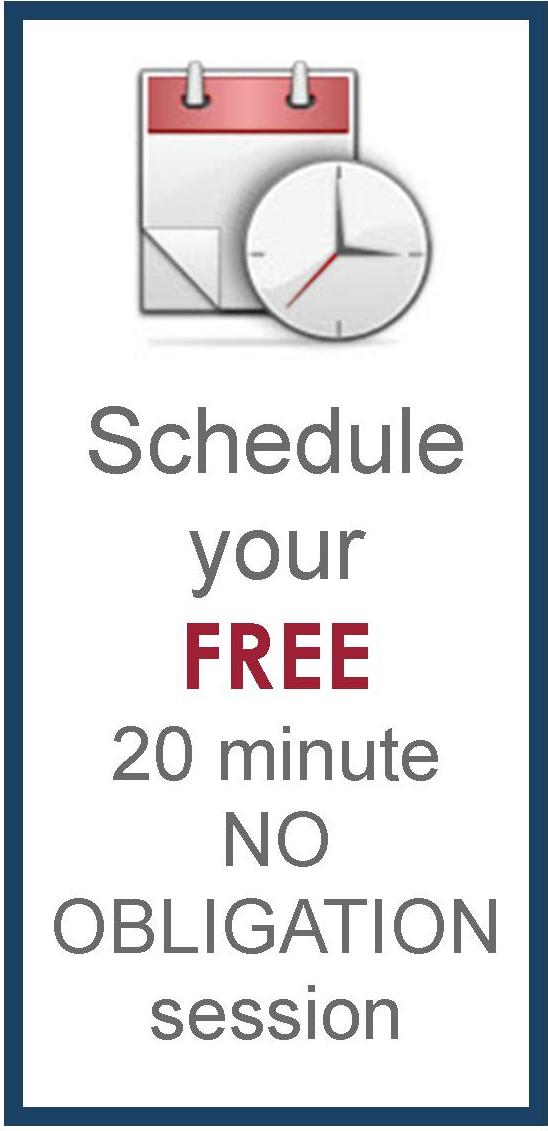How can I be more productive with my time? Be mindful!

Mindfulness gives you time. Time gives you choices. Choices, skillfully made, lead to freedom.” ~ Bhante H. Gunaratana, Buddhist monk.
Table of Contents
How can I be more productive with my time? Be mindful!
Know your available productivity tools.
Cultivate mindfulness for productivity.
You cannot manage time. There is only so much of it in a 24-hour day; you can’t make a day longer or shorter. It follows, then, that there is no such thing as time management. What you can manage is the things you do inside the time you have to be more productive. Time allocation is a far more accurate description of what you can do.
Prioritization is at the top of the list for becoming more productive with your time. This is generally the time of year when academics feel settled into the semester, and classes are (hopefully) moving along smoothly. The turbulent times of mid-terms and wrapping up classes are still in the middle distance. This is when you can take advantage of being more productive with the time you have available.
Typically, my clients say, “I am not sure what I should be doing with my time,” when things slow down and settle into some sort of rhythm mid-semester. Clarity may be offered by deadlines, such as a conference or grant proposal to submit, an article to write, or administrative obligations from advising to curriculum revision committees. For many academics, research projects have to take second place just to get through the launch of a new semester, and the time has come to pick those up again. Or a book has been put on hold for “when there is more time.” None of this even takes familial or personal obligations into account.
Let me reiterate: There will never be more time.
Know your priorities
Ask yourself, “What are my biggest priorities?” Knowing your own purpose in the world can help you set those priorities and figure out where you want to put your energy. Visualize the size of your projects. Imagine if the projects were rocks: Gigantic boulders down to gritty sand. If you image your rocks as projects on a beach, you will probably have 3-4 large boulders larger than a soccer ball, 5-10 medium rocks the size of cobblestones, anywhere from 11-200 smallish to pebble-sized rocks, and thousands upon thousands of grains of gritty sand. On a beach, the sand seems endless, and if you happen to be wearing closed-toe sandals, enormously irritating.
The classic business school version uses this image to help you prioritize your projects by mentally shrinking the rocks down to fit into a jar and then noticing you will be unable to fit the rocks in if you start with the sand. Starting with the big rocks first, then smaller stones and pebbles, and then filling the jar with sand. You can see where this is going.
What are your boulders? Your book, class preparation, animal experiments, human subject data gathering? What are your cobblestones? Class prep from week to week, preparing for faculty meetings, submitting interim budget reports? What are your pebbles? 15-minute advising sessions with students, check-ins with direct reports or lab supervisors? What is your sand? For most people, whether in higher education or industry, the answer is endless emails and constant interruptions by phone or text, combined with falling into the internet trap of social media or “looking at just one more article related to my project.”
Know your circadian rhythms
No matter where you are currently expending the most energy, it’s not possible to go full tilt on anything forever. Humans simply are not designed that way. Human bodies operate with different rhythms. There are multiple types of rhythms, but most people are familiar with the 24-hour circadian cycle.
Circadian rhythm refers to the human body’s internal clock regulating many physiological functions, including sleep, body temperature, hormones, appetite, and other bodily functions, and are mainly affected by light and darkness. In general, you can say the human circadian rhythms autonomously produce a 24-hour rhythm driven by the internal biological clock.
If you do not honor your own circadian rhythms, your cognition may be impaired through fatigue, disorientation, or insomnia. This is not a good outcome for a knowledge worker who needs the ability to think clearly. Interrupting circadian rhythms is also associated with diabetes, obesity, dementia, and reduced mental health. Know your chronotype and power hours.
Know your chronotype
Your chronotype influences activity level. Chronotypes are natural preferences of the body for wakefulness and sleep. A person’s chronotype is more of a set internal clock that is less easily manipulated than their circadian rhythm. There are now considered to be six human chronotypes based on alertness and productivity for certain times of the day.
Evolution gifted humans with diversity of chronotypes. If you are a night owl, you will do your best work at night. If you are a morning lark, you will do your best work early in the morning. Some people can go either way, depending on need. If you think about humans living in hunter-gatherer bands, it makes perfect intuitive sense: some people need to stay awake at night to protect the band from prowling predators (around 15-30%), some people need to get up early when it’s easy to see what is beyond the perimeter (around 30-40%), and some people can be awake or asleep depending on the needs of the group (up to 60%).
Beyond the night owls or morning larks, there are these intermediate types:
- Lion, an early bird who is most alert and productive in the morning, roughly 9 AM to between12:00 and 2:00 PM
- Bear, an intermediate chronotype who follows the sun, waking a bit later and most productive from 10:00 AM to 2:00 PM
- Wolf, a night owl who is most productive in the afternoon, roughly 1:00-5:00 PM
- Dolphin, an insomniac with fragmented sleep patterns unable to keep a regular sleep schedule, who tends to be most productive between 3:00 PM to 7:00 PM.
Pay attention to your power hours when you are capable of peak performance. Work to move your boulders then. Are you plodding through a task, or are you flying through it? If you are plodding along, you may need to revise whatever you have done at a later time. You will do more and do it better if you feel like you are gliding along.
Know your available productivity tools
There are a variety of tools available to help with time allocation. The first thing to do is think through how you mentally allocate your available time. Once you know that, you want to figure out when you are going to take an action, whether class preparation, administrative reports, running experiments, or writing. The next thing you need to do is set time limits, accounting for distractions as well as productive time. I believe part of setting time limits should include limiting the amount of time you set aside for internet research. There will come a point when you are reading the same conclusions over and over or seeing the same data again and again. That’s when you should stop. There will always be another article coming out or a new book on your topic. At some point, you must get on with whatever you need to do.
Thinking tools for being more productive
I believe one of the best tools for thinking this through is Stephen Covey’s Four Quadrants for time allocation based on 7 Habits of Highly Effective People. Here is my version of the template with ideal times attached. Writers and other knowledge workers ideally should be spending the majority of their time in the upper right-hand quadrant. It may not work out that way, but thinking about spending 60-85% of your time in this quadrant is a useful aspiration.
There are also plenty of electronic or physical planners you can use, such as Asana, Jiro, Trello, Todolist, Microsoft To-Do, etc. Pick the one that works for you. Some of these resources are friendlier for team collaboration, while others are more oriented to a single individual trying to get work done. Organizing is an art, not a science, and your organizing style will be unique to you.

Time limit tools
Only you know if what you are using your limited time to do is merely a distraction (most social media) or providing true traction (internet research on a topic of consequence to you). If scrolling through Instagram is relaxing for you after doing some heavy lifting of your boulders, set a timer on your phone, computer, or even an old-fashioned kitchen timer to put an end to your scrolling after a specified amount of time. Computer versions include Clockify, Notion, ClickUp, Pomodoro, and RescueTime. Each of these has planning features as well but are specifically designed to create time tracking for your activities. It may be a lot more information than you want or can use, but trying one out for a period of time may let you understand better how you use your time. Much like time spent using cellphone apps, you may be surprised to find out how much time you spend on “unproductive” activities.
If you don’t want to even try one of these systems with a free introduction, you can go back to an old-fashioned written version to think about how you allocate your time. Dr. Ned Hallowell, an American psychiatrist who has written several books about distraction, suggests tracking at least one typical day fully. Begin with waking up, brushing your teeth, morning drink and/or food intake, reading the news, commuting to work, and starting work [email, meetings, advising…and personal academic work]. Continue this kind of minute examination of how you spend your time through one whole typical day. Knowing this information will immediately give you a sense of your work pattern and how your personal life fits together with your professional life. You can extend this data collection if you like, but most people are fully cognizant of how they typically allocate their time by the end of a week at most.
The 80-20 rule
Vilfredo Pareto, an Italian economist, first ascertained the 80/20 rule (Pareto principle) in 1906. First, he noticed that 20% of the pea pods in his garden were produced by 80% of the peas. While teaching at the University of Laussane, Pareto extrapolated this to land ownership and concluded that 20% of the Italian population owned 80% of the land. In 1941, Dr. Joseph M Juran, a Romanian-born American engineer and management consultant, concluded you could apply the Pareto principle to other fields, noting that 80% of all quality issues in manufacturing are created by just 20% of the output. Juran was the first to maintain the rule of 80-20 was a universal principle that applied to a wide variety of situations. Using Juran’s approach in terms of productivity, you might say 80% of your results come from 20% of the effort.
One way to think about applying this principle to time allocation is to look at the activities you have planned for your day and eliminate 20% of them from your schedule. If you plan every minute of the day, from waking up to lying down again to sleep, you will leave no room for the unexpected. And there is always something unexpected. A child or a pet gets sick, a car or a commuter train breaks down, or a computer outage occurs at home or work for whatever reason. Build in some breathing room, and you will be more mindful of creating more productive time and less stressed about your “unproductive” time.
Cultivate mindfulness for productivity
You can break free from the life of a harried academic. Being intentional about your daily choices for how you spend your time, from your academic work to relaxation time with your family, is a form of mindfulness. Knowing you are intentionally frittering away time because you need a break is vastly different from wondering, “Where did my time go?” (Although I personally believe no time is wasted as long as you are aware of how you are spending it.) In the event of a true emergency, understand you can return to mindfulness once the emergency is over. Mindfulness improves the quality of your attention and allows you to harness your available energy and perform your tasks with more efficiency and control.
Mindfulness will help slow down your brain when it is racing with all the obligations that need to be fulfilled. If you are writing, breathe in deeply as you pick up a project where you left off. Give yourself a little time to return to where your thoughts were the last time you were working on the project. If you are teaching, give yourself a little time to breathe before mindfully stepping into the classroom. If you are running an experiment, spend some time being mindful of the question you are trying to answer. If you are spending time with loved ones, allow yourself to be fully with them without feeling guilty, aware you will get back to work when the time is right. Slowing down to savor a moment will help you to appreciate the richness of your life and work.
Ultimately, mindfulness will increase your productive time.
If you still need help being more productive, schedule a FREE 20-session with Hillary.
Tags: mindfulness, planning, productivity, strategies





